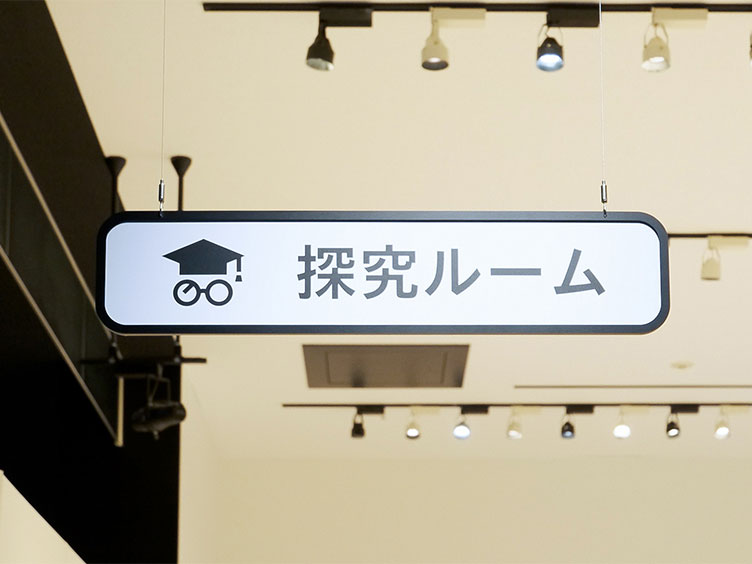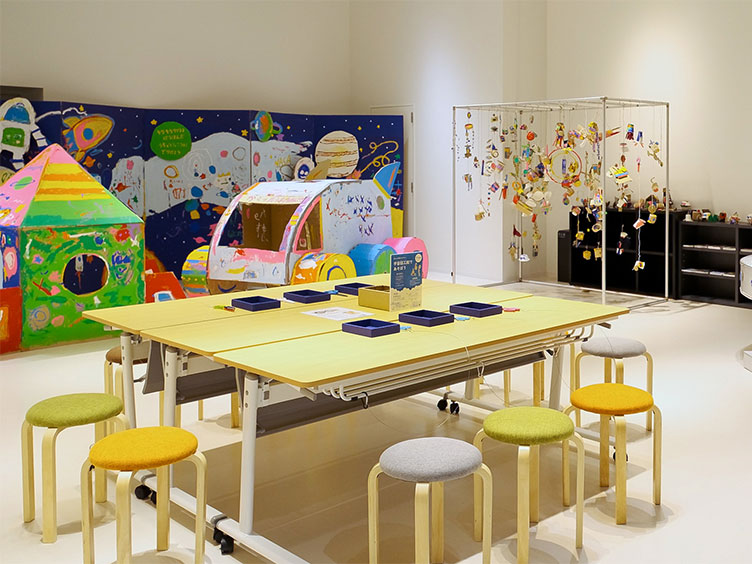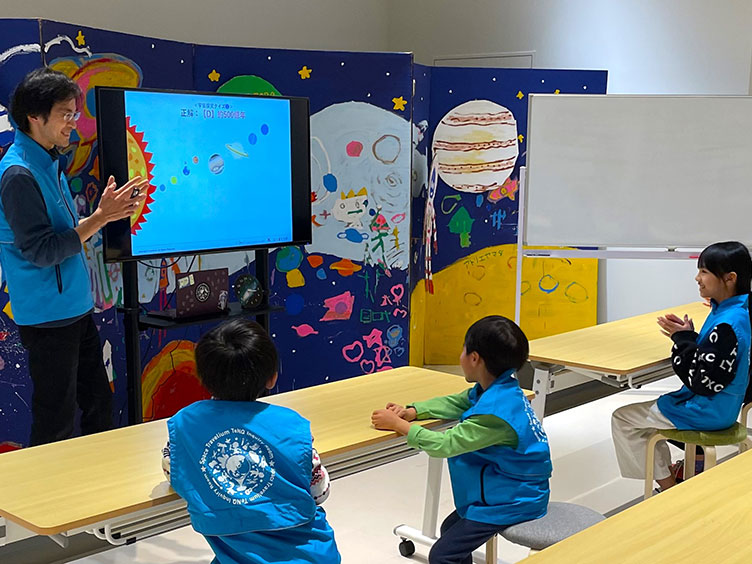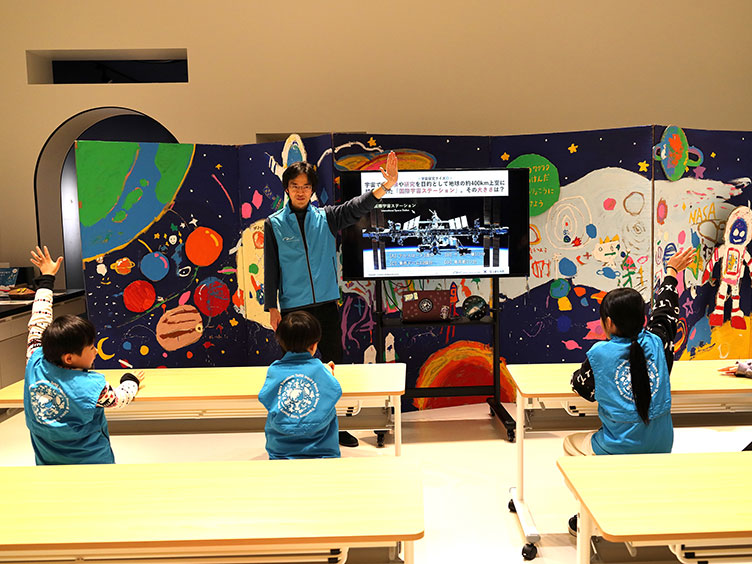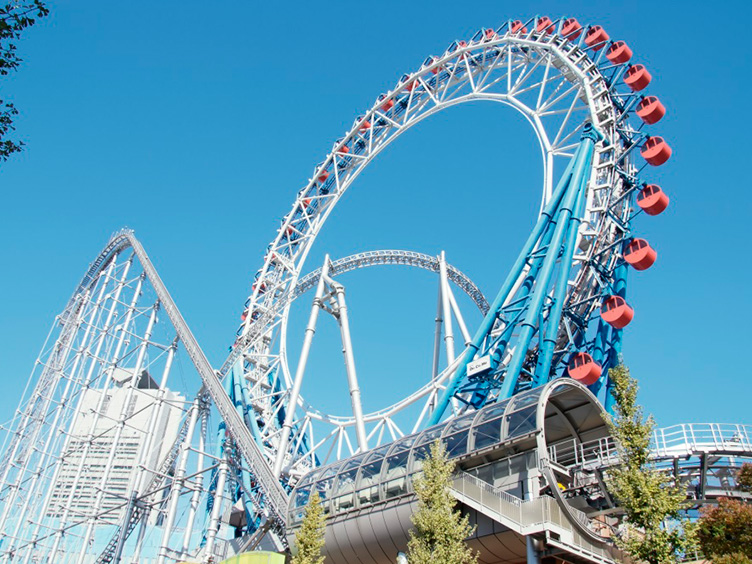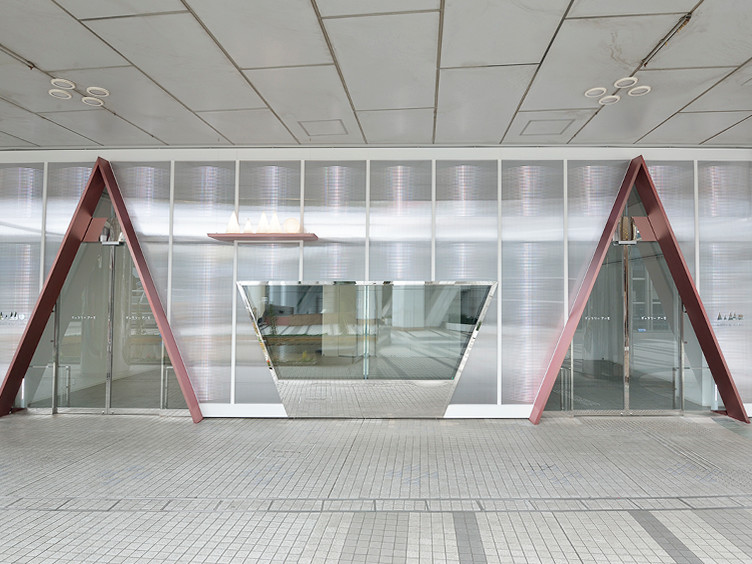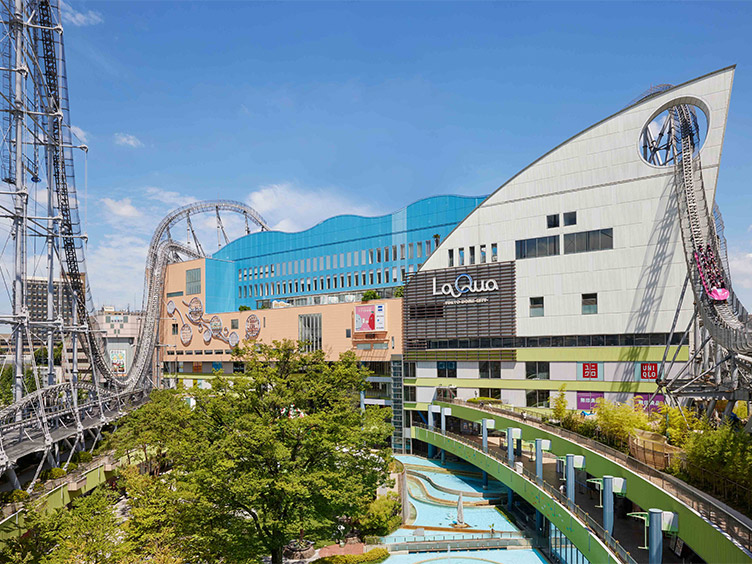教育プログラム
「探究ルーム」では、「ワンダー(不思議に思うこと、興味をもつこと)を探究して、世界と自分がつながるワクワクを感じよう」をコンセプトに、
宇宙を切り口にサイエンスやアートなど幅広く分野を横断し、子供たちの好奇心と学びを広げる教育プログラムをご提供いたします。
平日は主に自由工作室として、誰でも自由に工作や読書を楽しむことができるエリアに。土日は探究学習をテーマに、さまざまな講座(有料)を開催いたします。
「探究ルーム」講座について
- 施設内で受講する「現地講座」と、Zoomを通じて配信される「オンライン講座」がございます。
- 現地講座の参加者には、当該講座の開催期間に限り、当施設に何度でも入館できる入館証を、参加者本人と保護者(同伴者)1名分の計2枚が発行されます。
- 連続講座は、途中の回からはご参加いただけません。
- 講座の振り替えは、同月内に、別コースで同じ講座の開催がある場合に限り承ります。
- ※振り替え前の講座の3日前までに、当社から送付した参加案内メールに振り替え希望の旨をご返信ください。
- 各講座のチケットは、2日前の23:59までご購入いただけます。
- ※連続講座は初日の2日前23:59までご購入いただけます。
- 原則として、チケットご購入後にキャンセルされる場合でも、返金はいたしかねますので、あらかじめご了承ください。
利用規約
ご購入前に、必ずこちらの利用規約をご確認ください。
現地講座
「Space Travelium TeNQ」館内の「探究ルーム」にて、主に土曜日・日曜日に開催する有料講座です。じっくり学べる連続講座や、ライトに体験したい方向けの単独講座など、様々なラインナップをご用意しております。
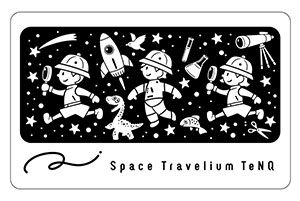
連続講座をご購入の方には、講座期間は無料で「Space Travelium
TeNQ」に入館いただける入館証を発行いたします。(参加者と保護者の方に計2枚)
ただし、同時期に2つ以上の講座を購入の場合は、期間に合わせて計2枚までの発行とさせていただきますので、あらかじめご了承ください。
各講座の紹介
なりきりラボ特別編 宇宙飛行士 お試し版
| 制作 | 株式会社a.school |
|---|---|
| 監修 | 小熊みどり(科学コミュニケーター) |
| 協力 | 株式会社デジタルブラスト |
| 内容紹介 | 「なりきりラボ特別編 宇宙飛行士」をライトに体験したい方向けの、90分で終わるお試し版です。クイズやアクティビティの一部だけご体験いただけます。 |
| 対象年齢 | 小学1~4年生 |
| 料金 | 6,000円
|
| 定員 | 10名 |
| 日程 | 次回の開催日程は決まり次第お知らせいたします。 |
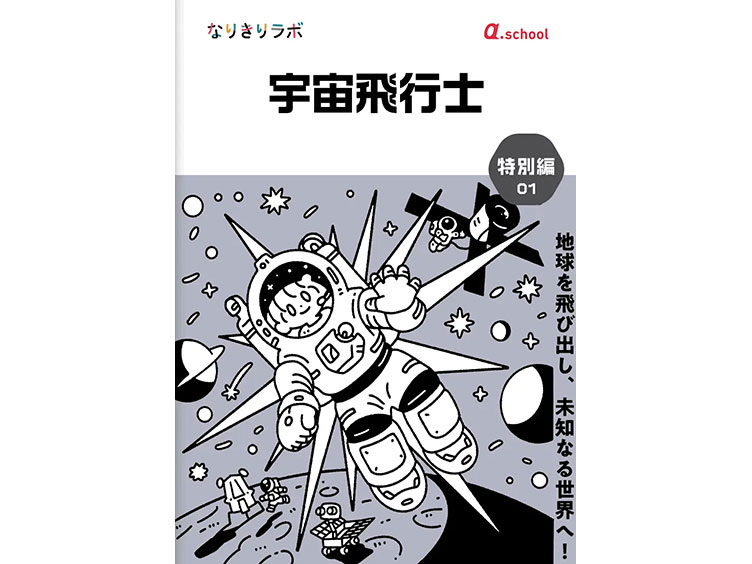
宙のアトリエ(全4回)
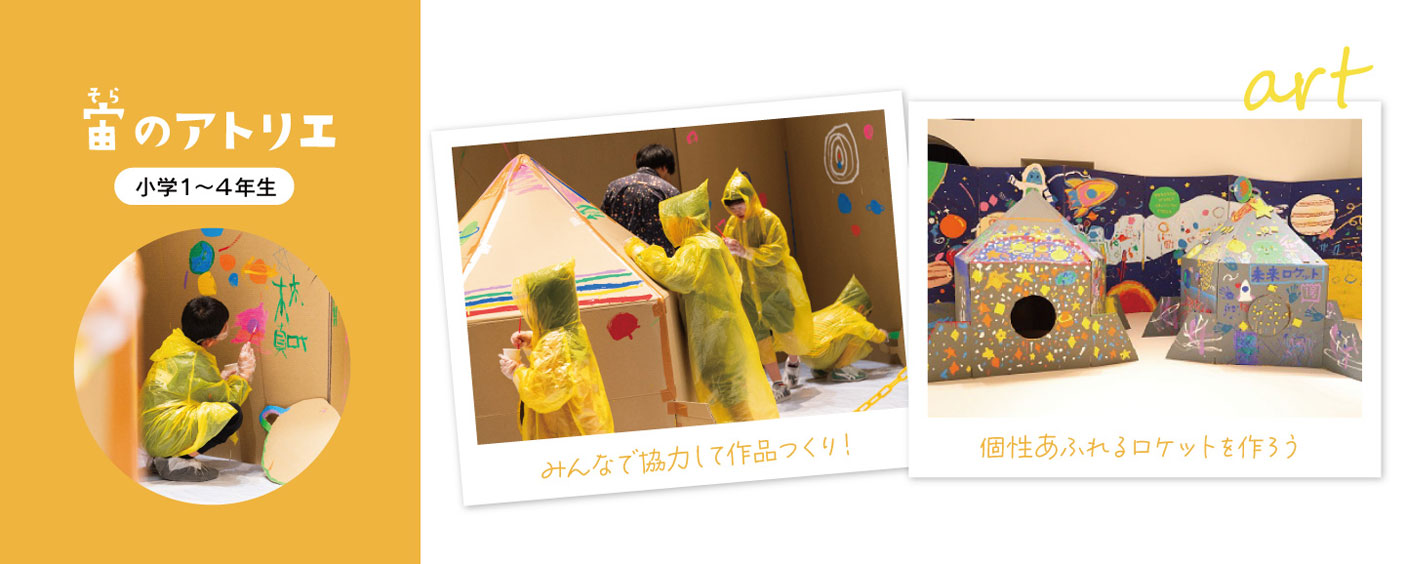
| 制作 | アトリエヤマダ株式会社 |
|---|---|
| 内容紹介 |
自分の想像の中にあるものを、手を動かして形にしていくアートプログラムです。
【第1回】レクチャー(素材や道具について) 詳細:note |
| 対象年齢 | 小学1~4年生 |
| 料金 | 13,000円
|
| 定員 | 各コース2~10名
|
| 日程 |
【2025年11月Aコース(13:00~14:30)】 11月29日(土)、12月6日(土)、13日(土)、20日(土) 【2025年11月Bコース(16:00~17:30)】 11月30日(日)、12月7日(日)、14日(日)、21日(日) 【2026年1月Aコース(13:00~14:30)】 1月24日(土)、31日(土)、2月7日(土)、14日(土) 【2026年1月Bコース(16:00~17:30)】 1月25日(日)、2月1日(日)、8日(日)、15日(日) 【2026年2月Aコース(13:00~14:30)】 2月21日(土)、28日(土)、3月7日(土)、14日(土) 【2026年2月Bコース(16:00~17:30)】 2月22日(日)、3月1日(日)、8日(日)、15日(日) |
| 購入方法 | |
| 注意事項 |
|
なりきりラボ特別編 宇宙飛行士(全8回)
なりきりラボ特別編 宇宙飛行士(全8回)
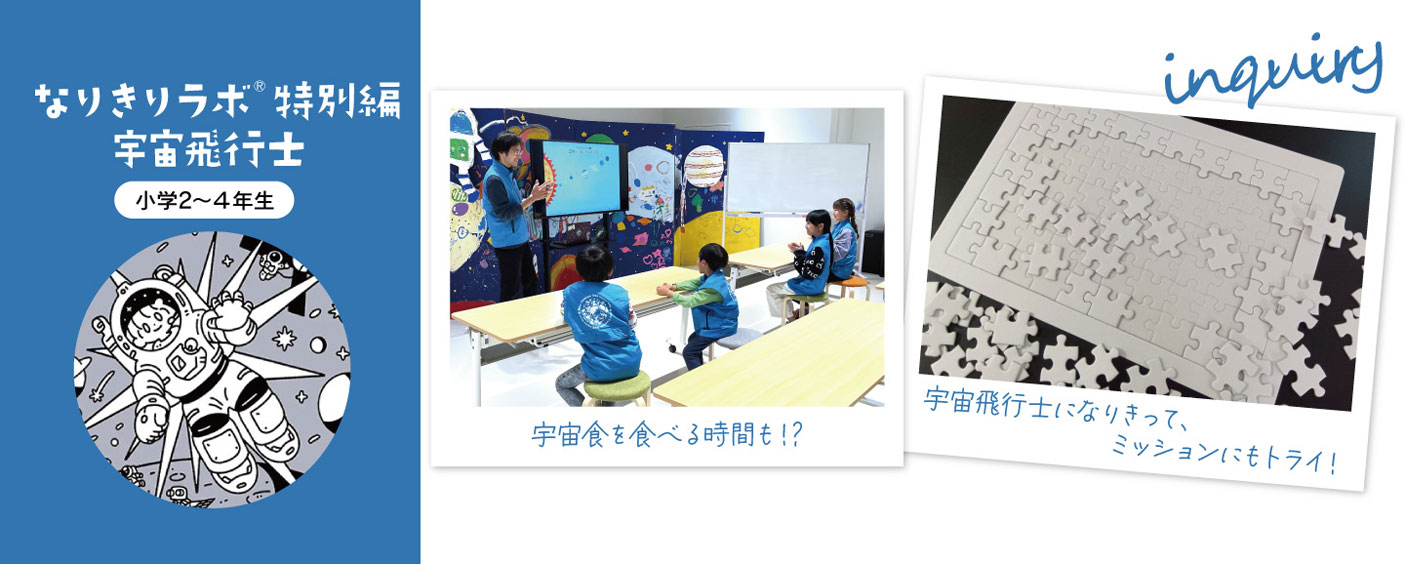
| 制作 | 株式会社a.school |
|---|---|
| 監修 | 小熊みどり(科学コミュニケーター) |
| 協力 | 株式会社デジタルブラスト |
| 内容紹介 |
地球と違うことがたくさんある宇宙について、宇宙飛行士になりきって学び、自分が宇宙に行ったら何をしたいか、何ができるかを考えます。クイズやカードゲーム、宇宙飛行士選抜試験を参考にしたアクティビティなどをやりながら、宇宙飛行士や宇宙開発について楽しく学べます。誰もが宇宙に行ける時代に必要になることを、一足先に探してみましょう。 【第1回:宇宙の暮らし】宇宙や国際宇宙ステーションの暮らしをクイズ形式で学びます。さらに、国際宇宙ステーションの設備や将来の宇宙での暮らしについてのワークを行います。 【第2回:宇宙開発の歴史と現代】宇宙開発の歴史や現代の技術についてクイズ形式で学びます。また、カードを使ってロケットの特徴についてみんなで考えたり、宇宙技術がどのように役立つか考えるワークを行います。 【第3回:これからの宇宙開発】将来の宇宙開発と課題についてクイズ形式で学びます。さらに、宇宙ゴミの課題やアルテミス計画のその後について考えるワークを行います。 【第4回:宇宙開発に関わる仕事】人工衛星や国際宇宙ステーションなどに関わる仕事についてクイズ形式で学びます。また、月面ローバーについてのワークや、ゲストをお呼びしてお仕事インタビューをします。 【第5回:宇宙飛行士という仕事】宇宙飛行士の試験や仕事についてクイズ形式で学びます。さらに、宇宙飛行士選抜試験を模したワークに挑戦してみましょう。 【第6回:宇宙飛行士にチャレンジ①】宇宙飛行士になったら宇宙で様々な仕事を行います。その仕事に必要なコミュニケーション力について、ゲーム形式のミッションにチームで挑戦してみましょう。 【第7回:宇宙飛行士にチャレンジ②】宇宙での活動は危険と隣り合わせです。予想外のことにどのように対応すべきか、ゲーム形式のミッションにチームで挑戦してみましょう。 【第8回:宇宙飛行士になったら】ワークシートを埋めながら展示を回り、宇宙飛行士について学びます。また、宇宙飛行士になったつもりで宇宙食を食べ、最後に宇宙飛行士になったら何をしたいか発表しましょう。 |
| 対象年齢 | 小学2~4年生 |
| 料金 | 36,000円
|
| 定員 | 各コース2~10名
|
| 日程 |
【2026年1月Aコース(15:30~17:00)】 1月24日(土)、31日(土)、2月7日(土)、14日(土)、21日(土)、28日(土)、3月7日(土)、14日(土) 【2026年1月Bコース(13:00~14:30)】 1月25日(日)、2月1日(日)、8日(日)、15日(日)、 22日(日)、3月1日(日)、8日(日)、15日(日) |
| 購入方法 |
Life in Space ~地球外生命を探査せよ~(全8回)
Life in Space ~地球外生命を探査せよ~(全8回)
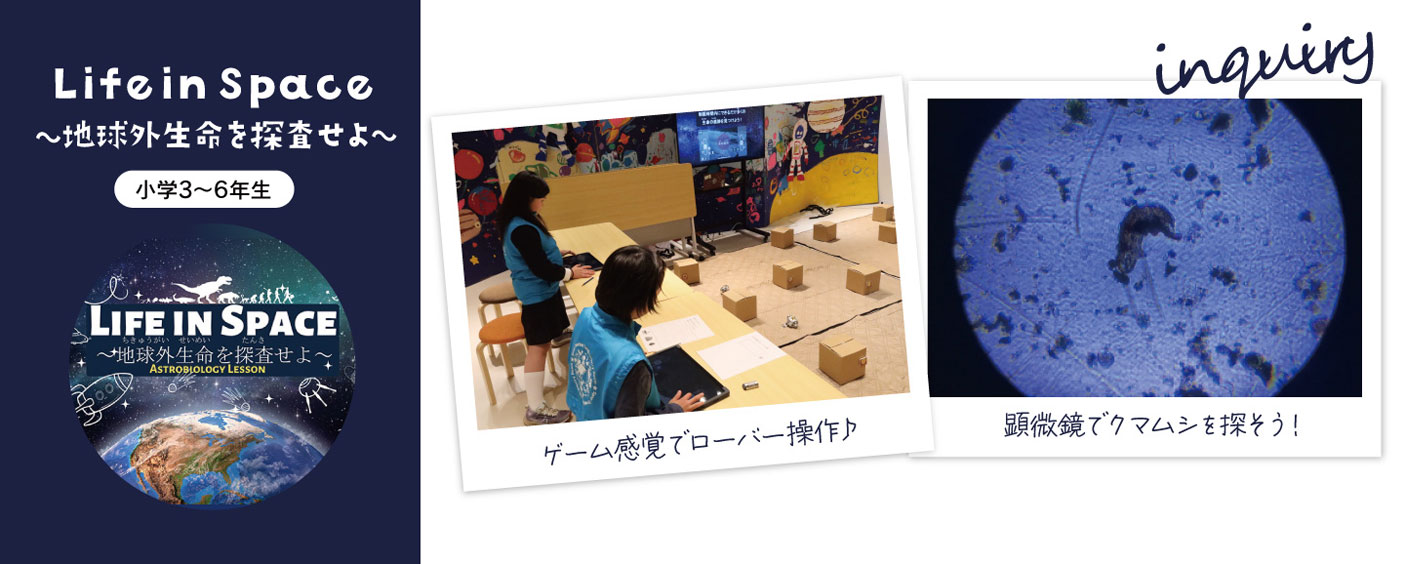
| 制作 | 株式会社小学館集英社プロダクション |
|---|---|
| 監修 | 小熊みどり(科学コミュニケーター) |
| 内容紹介 |
この広い宇宙に生命はいるのか?本講座では最新の研究成果を見ながら、研究者と同じ目線で考えていきます。クイズやカードゲーム、顕微鏡観察やローバー操作などをしながら楽しく宇宙と生命について学んだあと、宇宙のどこに生命がいそうか研究者のように調べて、自分の研究ポスターを作りましょう。 【第1回:地球外生命は実在する!?】すごろくを使って遊びながら、宇宙ができてから現在までの歴史を学びます。また、現代の宇宙探査について学び、地球外生命の可能性を考えます。 【第2回:生命って何?】カードを使って生命と非生命を分類しながら、生命の特徴について学びます。また生命の起源について、有力な説をいくつか見ながら考えます。 【第3回:生命はどこにいる?】地球のどこに、どんな生命がいるのか、○×クイズやワークを通して考えます。そして顕微鏡を使って、最強生物と言われるクマムシを探します。 【第4回:いざ、地球外生命探査!】生命を探査するために、地球や宇宙でどのような方法が行われているか学びます。そして実際にローバーをリモコン操作して、生命の痕跡を探すワークを行います。 【第5回:生命はここにいる】これまで学んだことを振り返りながら、地球外生命がいそうな惑星を探します。いろんな惑星や衛星のカードを使って、どこに生命がいそうか考えます。 【第6回:スペースリサーチに挑戦!】生命がいそうな惑星について、本やインターネットを使って調査を行います。ワークシートを埋めながら、自分が選んだ惑星について調べてまとめます。 【第7回:調査ポスターを作ってみよう】生命がいそうな惑星について自分が調べたことを、ポスターに書いていきます。カラフルな色紙を使って、自分のオリジナル調査ポスターを作成します。 【第8回:プレゼンテーションに挑戦!】作った調査ポスターを、みんなの前で発表します。またポスター発表会には特別ゲストをお招きし、ポスターの内容について講評をいただきます。 |
| 対象年齢 | 小学3~6年生 |
| 料金 | 40,000円
|
| 定員 | 各コース2~10名
|
| 日程 |
【2026年1月Aコース(17:30~19:00)】 1月24日(土)、31日(土)、2月7日(土)、14日(土)、21日(土)、28日(土)、3月7日(土)、14日(土) 【2026年1月Bコース(10:30~12:00)】 1月25日(日)、2月1日(日)、8日(日)、15日(日)、 22日(日)、3月1日(日)、8日(日)、15日(日) |
| 購入方法 |
オンライン講座
インターネットを利用して、施設の外からでも参加できる講座です。視聴には主にZoomを使用します。
講師と質疑応答などができる「本配信」の他、参加できなかった方向けに録画映像を配信する「再配信」があります。
Space Travelium TeNQ 特別講義(全6回)
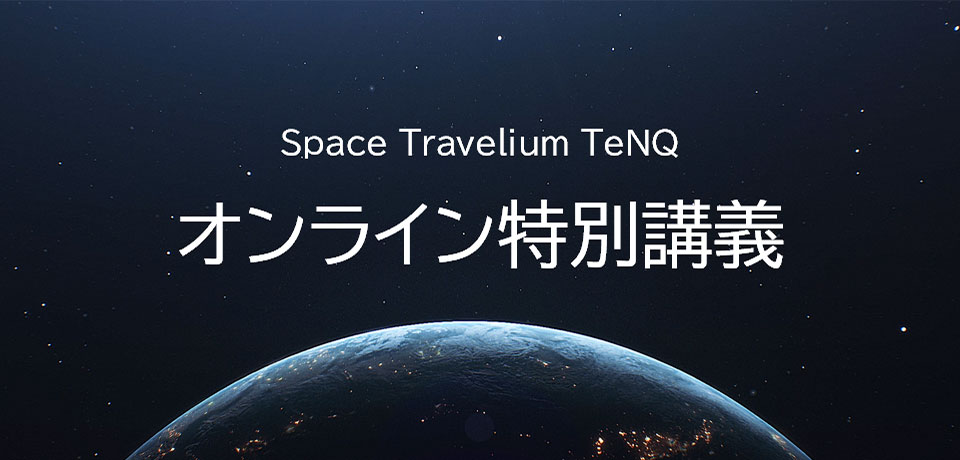
| 講師 | 村山斉氏(東京大学カブリ数物連携宇宙研究機構(Kavli IPMU)教授) |
|---|---|
| 内容紹介 |
【各回のテーマ】 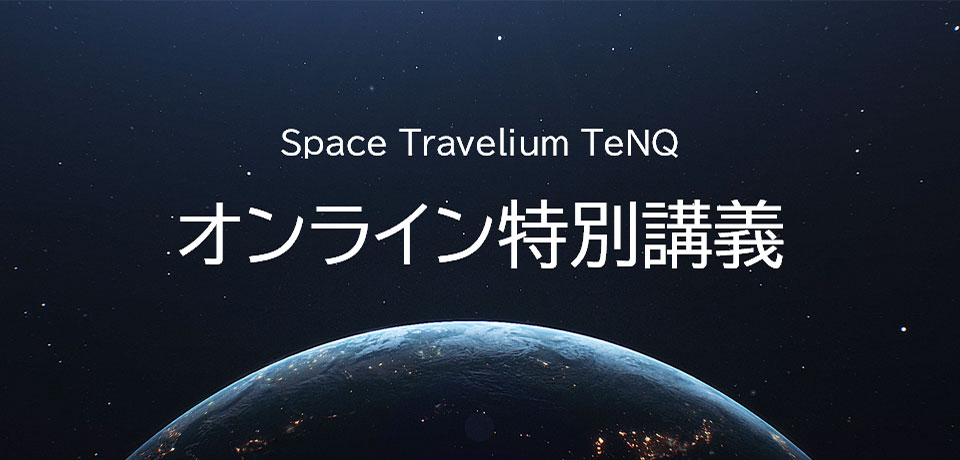
【第1回:昼と夜、季節、なぜ太陽や星が動く?】 私たちが暮らす地球で起きていることは、宇宙とつながっています。どうやって太陽は光り輝いているのでしょうか? 夏や冬の仕組みを考えると、夏が2回ある場所がある? 国際宇宙ステーションが落ちてこない理由と、太陽系の惑星や月が回っている理由は同じ? 宇宙から地球を考えてみると、当たり前のように思えることには、ちゃんと理由があることがわかります。地球と太陽系を中心に、宇宙の色々なお話をいたします。 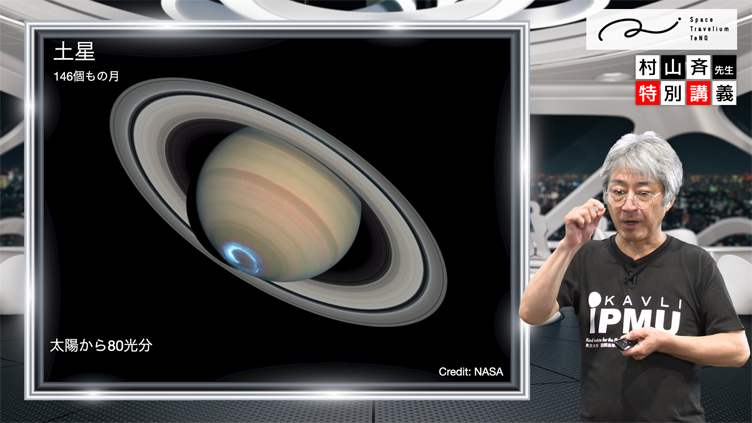
【第2回:太陽系、惑星、月、系外惑星、宇宙人?】 太陽系にはいろいろな姿の惑星や天体があり、さまざまな特徴があることがわかってきました。縞模様や環が美しい木星や土星はガスの塊なので、地面が無く沈んでしまいます。また、火山が噴火している衛星や、地下から水が噴き出している衛星が見つかっています。そして、太陽系のさらに向こうにもたくさんの惑星が見つかってきています。太陽系の外にある惑星とはどんな場所なのでしょうか。宇宙人はいるのでしょうか? 太陽系の惑星から、さらに外にある星や惑星まで、最新の研究でわかってきたことをお話いたします。 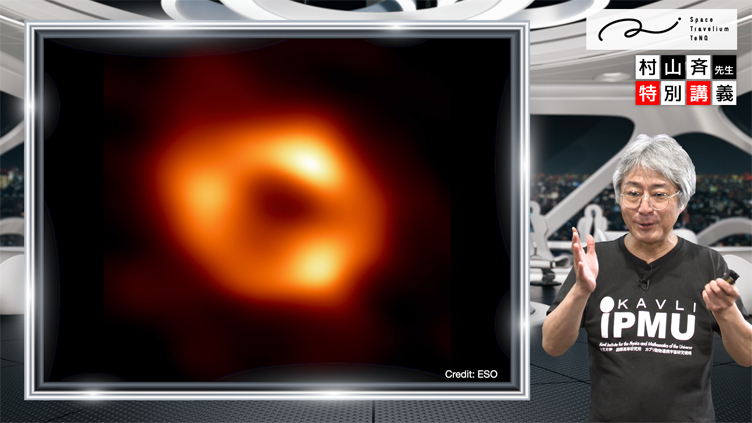
【第3回:銀河系、星の一生、ブラックホール】 私たちは、星やガスがたくさん集まった天の川銀河の中にいます。望遠鏡を使うと、色とりどりのガスでできた星雲が見つかります。星が死んだ後にできた星雲もあれば、今まさに星が生まれつつある星雲もあります。そんな私たちの天の川銀河の中心には、とんでもない重さのブラックホールがあることがわかりました。光すら出てこられない奇妙なブラックホールですが、最新の観測によって少しずつその姿が明らかになってきました。星の一生やブラックホールについて、わかりやすくお話いたします。 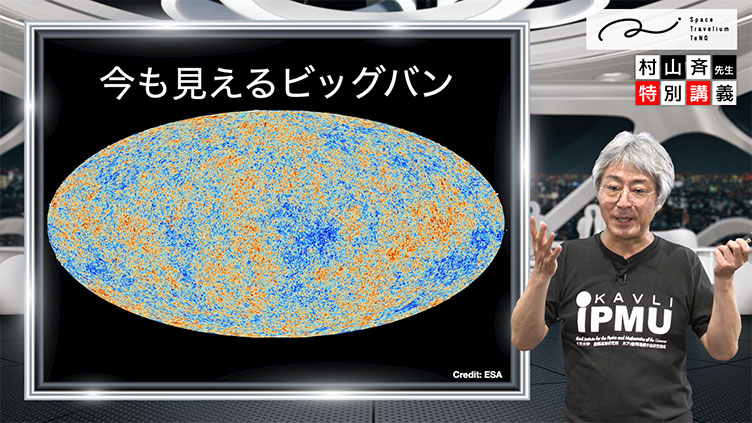
【第4回:銀河、銀河の進化、大規模構造、ビッグバン】 宇宙には「銀河」という星の大集団が、数千億個以上もあります。銀河の形は、渦巻き模様や丸い形、車輪のようなものまで様々で、その中心には超巨大ブラックホールがあります。ブラックホールを見ることはできるのか? そんな銀河は合体したり、たくさん集まって銀河団になったり、宇宙全体に散らばって大規模構造を作っています。どうやって銀河はできたのか? それは138億年前のビッグバンまでさかのぼります。銀河とビッグバンについてお話しいたします。 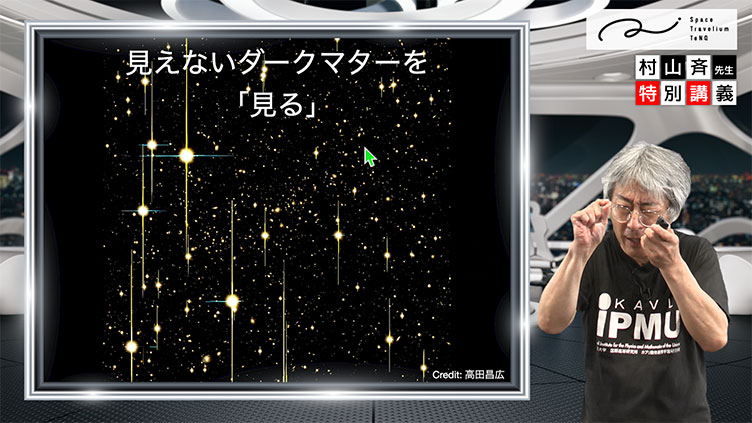
【第5回:元素の起源、ダークマター】 私たちはどこからやってきたのでしょうか? そのルーツをたどっていくと、大昔に生まれた星々にたどり着きます。私たちの体は星のかけらでできていて、金や銀は星の衝突による大爆発で生まれたことが分かってきました。そして、そんな星や銀河を生み出したのは、なんと正体不明のダークマターのようなのです。ダークマターは実は生き別れのお母さん? ダークマターとは何か、どうやって探せばよいのか。最新の研究成果と一緒にお話しいたします。 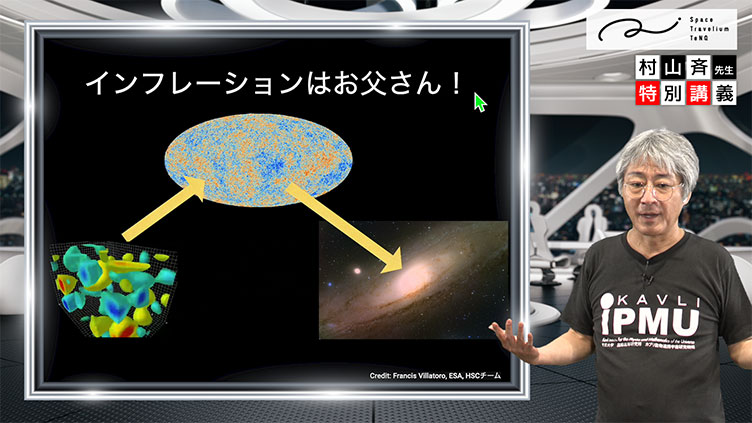
【第6回:反物質、インフレーション、ダークエネルギー】 宇宙の始まりを調べるほど、私たちがいま宇宙にいることは、当たり前ではないことが分かってきました。私たちを完全消滅の運命から救ったスーパーヒーローは、小さなニュートリノだったのかもしれない。この宇宙を生み出したのは、ミクロの世界のわずかな量子揺らぎだったのかもしれない。そしてこの宇宙はいずれ、どこまでも膨張して無限に引き裂かれて終わってしまうのかもしれない。しかも宇宙は想像もできない数がある? 最先端の研究現場で議論されている宇宙の始まりとこれからについてお話しいたします。 |
| 対象年齢 | 小学生から大人まで幅広くご視聴いただけます。 |
| 料金 |
本配信:2,000円/回 再配信:1,000円/回 |
| 配信期間 |
次回日程が決定次第、ご案内いたします。 |
| 購入方法 |
次回日程が決定次第、販売いたします。 |
| 注意事項 |
|
| 講師紹介 | 村山斉氏プロフィール |
